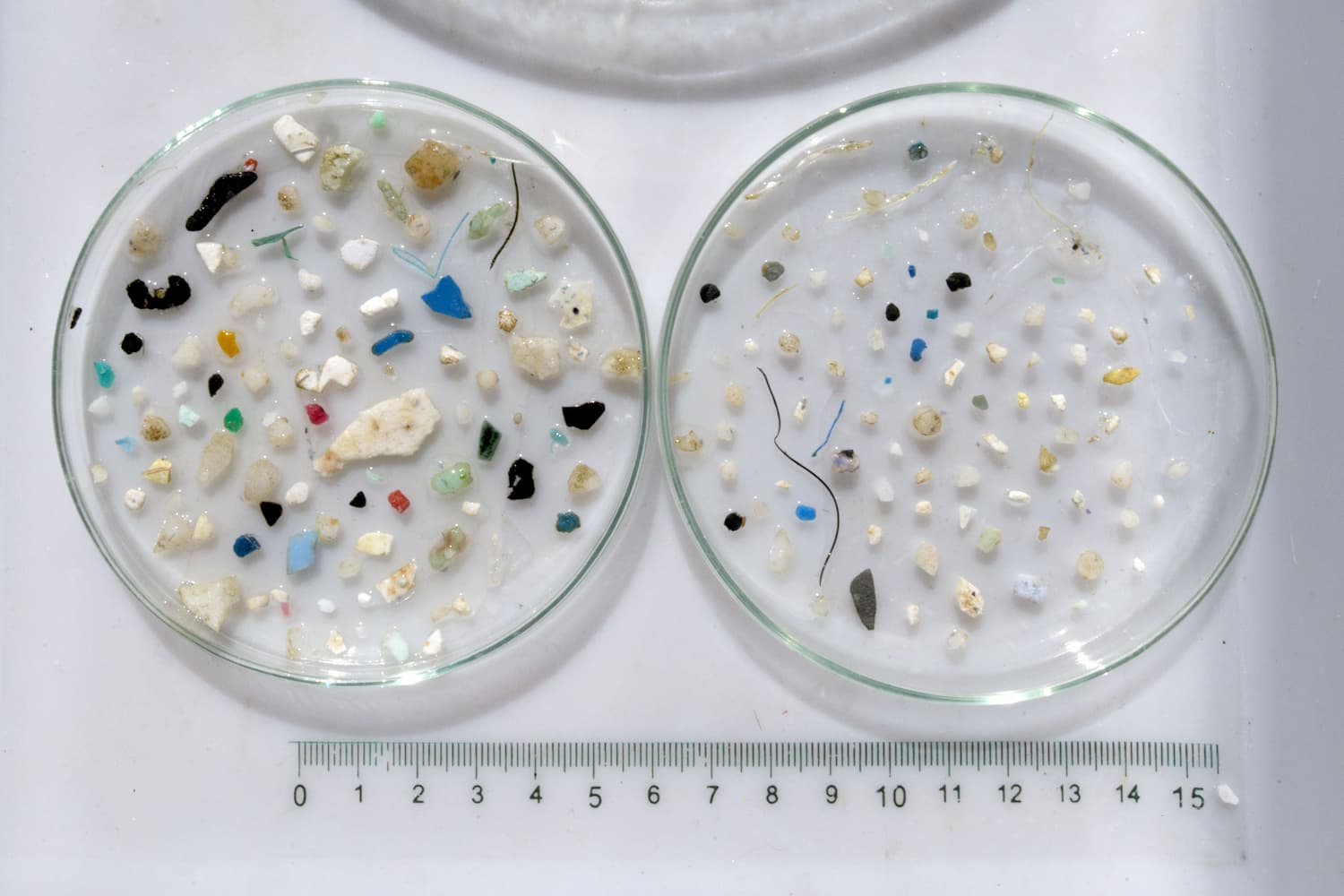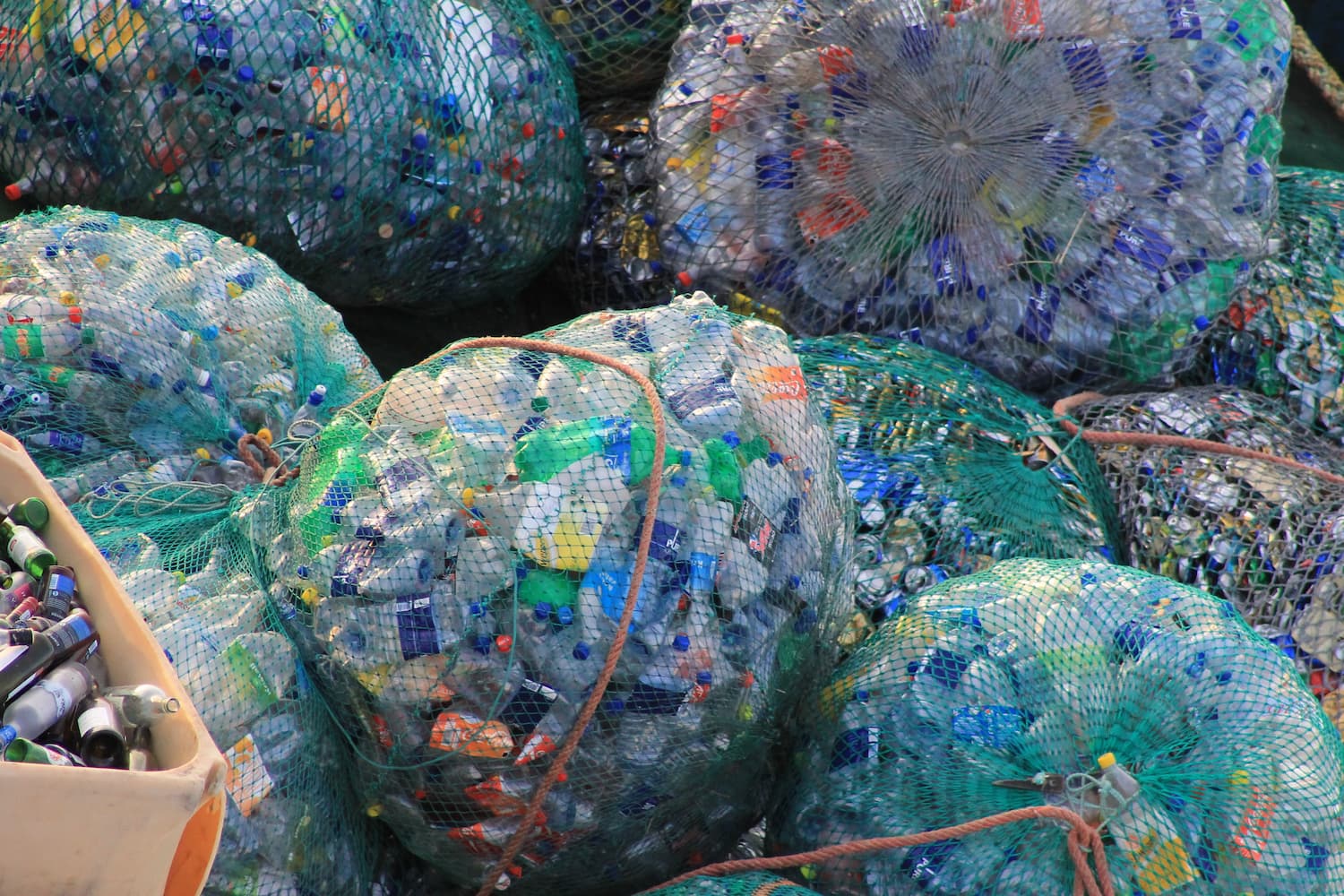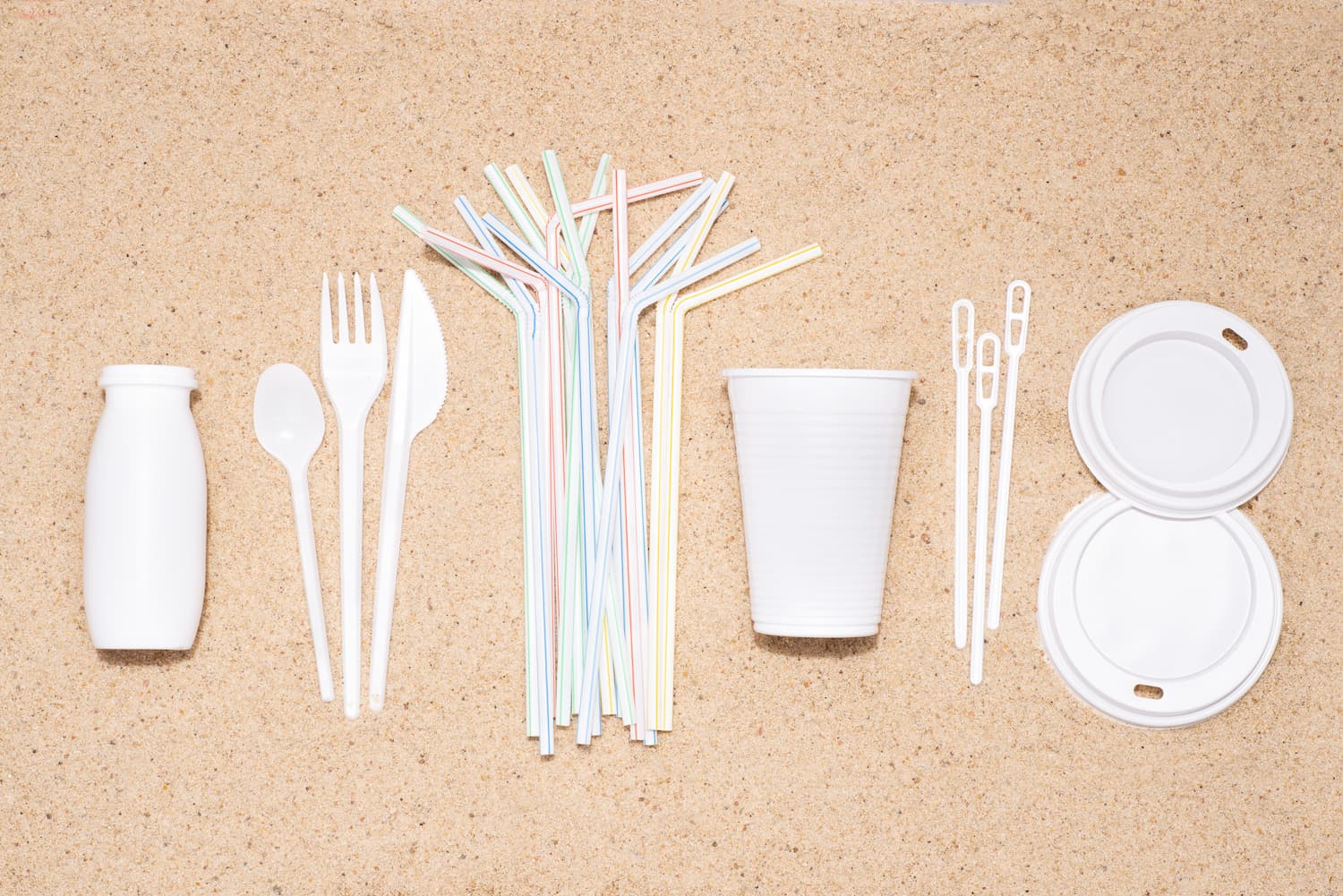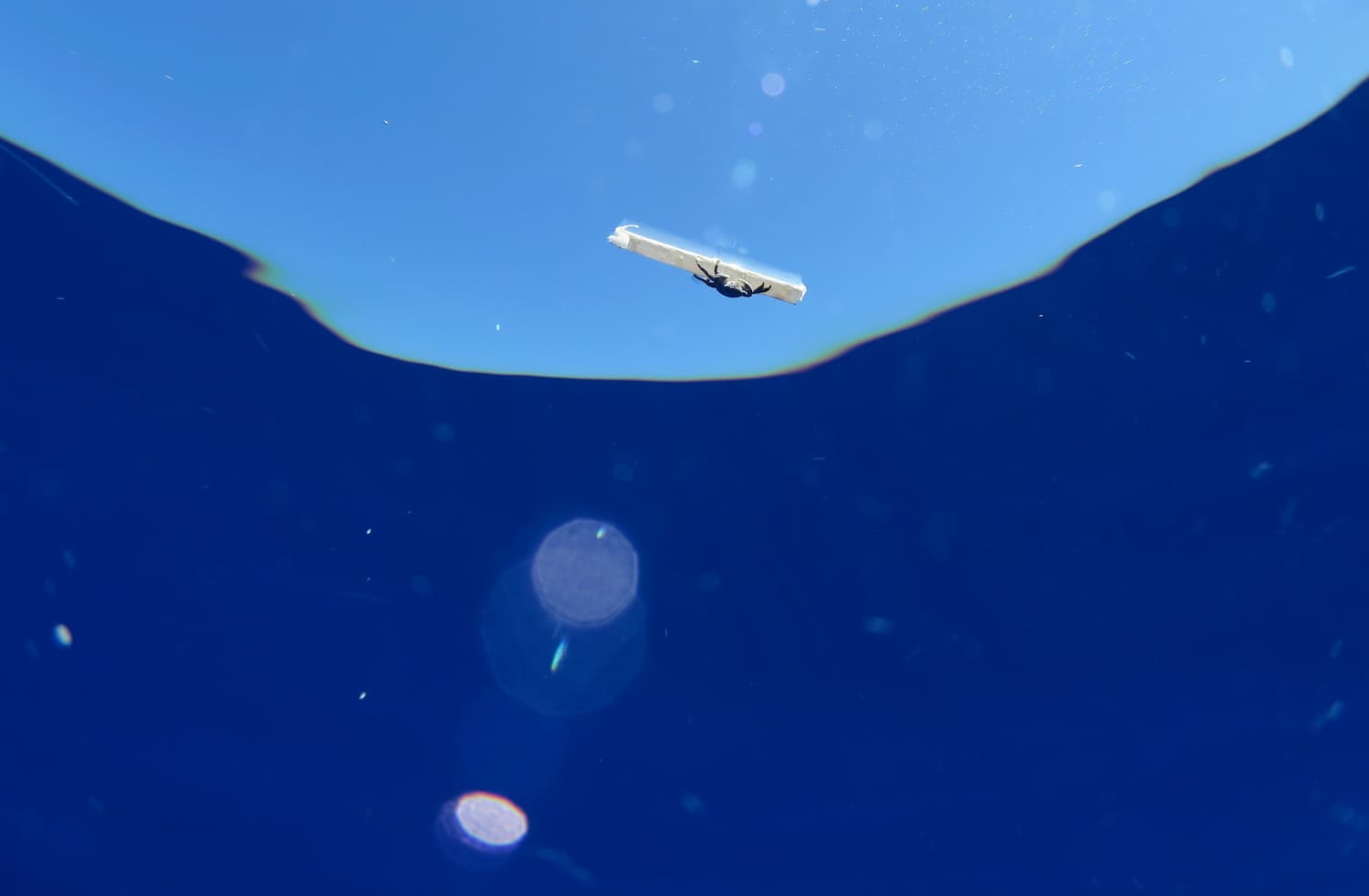Plastic pollution, the solutions are circular
The pollution of the Ocean by plastics no longer spares any area of the globe. These plastics, with dramatic consequences on living organisms, are mainly present in the form of micro-fragments, making illusory the idea of cleaning up the Ocean. Solutions are therefore on land. But what concrete actions can we actually take?

To find the best solutions, we need to go back to the source of the problem. The current economic model, based on the extraction of resources, their transformation and then their destruction, depletes the planet and generates mass waste. This is true regardless of the resources, whether organic or geological in origin. This impasse was pointed out in 1972 by a scientific report known as the “Meadows report” named after its main author.
What is the circular economy?
Theorists of circular economy Michael Braungart and William McDonough based their ideas on the Meadows report, and in the 1990s developed a model aimed at getting out of this linear consumption of resources. Their principles are inspired by nature and the functioning of major ecological cycles— water, carbon, etc.
They propose the 3R strategy— reduce, reuse, recycle. The 3Rs are both hierarchical and complementary. The priority is to reduce our consumption of resources, then to extend the lifespan of our objects through reuse and repair, and finally to recycle those that are no longer in use.
This strategy should enable virtuous economic loops where materials are reused endlessly. But from theory to practice, difficulties arise. Recycling waste in turn generates energy consumption and new pollution.
The concept of circular economy was then refined, very recently, by the concept of “not-harming the living”. The ultimate challenge is to preserve biodiversity, which includes humanity. It is indeed the preservation of biodiversity that conditions the future of humanity.
The circular economy — a solution to plastic pollution?
The circular economy is not a magic wand, but rather a framework for thinking about creating solutions. Only a rigorous vision of the circular economy, like the one proposed by the Tara Ocean Foundation, can effectively enable us to fight against plastic pollution.
Should we ban plastics?
Due to their low biodegradability and their toxicity, some plastics (PS, PFCs, etc.) pose particular problems. But they are sometimes irreplaceable and their substitution by glass, wood, cardboard, etc. is not without consequences, and creates other impacts detrimental to living things, such as deforestation to produce cardboard, for example, or even the over-exploitation of sand to produce glass.

What solutions does the circular economy propose ?
We must drastically reduce single-use or ephemeral products, and not just packaging. Such products are, in essence, the opposite of a circular economy. Eco-designing products means guaranteeing their longevity, repairability and finally recyclability.
What about tomorrow’s plastics?
We need to rethink our uses of plastics. Take advantage of their properties, in particular their extreme resistance, in a smarter way. They should therefore only be used in products that are used for a long time, and ultimately collected systematically for recycling. The plastics most toxic to the environment and those whose recycling is not possible at present must be abandoned. For example, the PS packaging used for most of our yoghurt containers.
Are we on the right path?
The concept of circular economy has recently appeared in public debate, but its systemic dimension is too often ignored: The circular economy is too often reduced to recycling alone, but recycling is only a small part of the circular economy. Reduction and reuse must finally take their place in our social projects and always — with respect for the living.
Why is recycling NOT enough?
Sort and recycle! Behind the injunction addressed to the citizen-consumer, hides the illusion of a model based on the continuous growth of resource consumption. But a model based exclusively on improving recycling has many flaws, not the least of which is that it is unrealistic.
Indeed, to be recycled, that is to say transformed into reusable material, an object must first be collected. Our current systems are failing. They could be greatly improved with, for example, prepaid deposit. But even so, there is no setup that guarantees 100% efficient collection.
For example, we’ve calculated that the implementation of the most efficient plastic bottle collection system would still generate a loss of 105 million bottles per year, in France alone! This demonstrates that to reduce plastic pollution, we must first reduce volumes.
We must also take into account that the objects in daily use are, for the most part, not designed to be recycled. Often composed of several materials, not separable, they are a headache for recycling and require costly sorting and treatment operations. Cardboard bricks are thus composed of plastic, aluminum, cardboard, inks and varnishes. This situation could be improved thanks to rigorous eco-design.
But there would still be economic limits to overcome. Because of high production costs, recycled material often struggles to be competitive with virgin materials. Only a very complex cost distribution scheme could overcome this limitation.

Finally, no packaging, when recycled, is sufficient to produce identical new packaging. Recycling operations always induce material loss: a recyclable bottle is not enough to produce a 100% new bottle.
In conclusion, let us emphasize that we’re not calling recycling into question. Rather, we’re restoring it to its rightful place as the last link in a strategy of circular economy. Implementing a circular economy raises immense technical, logistical and societal challenges.
The Tara Ocean Foundation committed to the circular economy
Tara Ocean Foundation is engaged in promoting this fundamental vision of the circular economy. We are encouraging legislators (government, deputies, senators) to build a framework that takes into account all the challenges of society. We are also working with the companies most able to take action. Development of bulk, deposit on packaging and ephemeral products, extension of legal guarantees, labeling regulations, banning the most problematic plastics — these are some of the issues defended by the Tara Ocean Foundation’s advocacy team.
How does the Tara Ocean Foundation view the circular economy law (AGEC)?
Very mobilized on this text, the Tara Ocean Foundation favorably recognized its historic ambitions. This is the first text to have clearly set targets for the reduction of single-use plastics, in line with European ambitions. But from ambitions to action — there’s a step that unfortunately has not yet been taken. Once again the recycling ambitions have been detailed and financial resources mobilized. For the rest, the ambitions of the law remain insufficiently detailed and applicable, often being limited to collective objectives, not applicable in practice.

The consequences are a blur, provoking a rush of bad solutions. For example, the choice is to define reduction targets in tonnage and not in units, which results in increasing multi-material packaging. For example, in seeking to avoid the PET bottle, manufacturers can resort to cardboard bricks — made of cardboard, but not only! These packages actually contain plastic in the form of thin films, and even sometimes aluminium. Result: packaging that contains a lower weight of plastic, but non-recyclable packaging whose plastic content will probably leak more quickly into the environment.
In the same way, by not banning the most problematic plastics, in particular styrenes, toxic, and non-recycled plastics, we do not encourage industrialists to adopt more virtuous solutions because these require new investments.
What are the next steps?
The Tara Ocean Foundation’s strategy regarding circular economy covers aspects of public information, reduction, reuse and recycling of plastics, as well as the environmental assessment of alternatives to plastics. Our strategy is constantly evolving, enriched by the latest scientific discoveries, but also by the socio-economic realities of our time. The latest version, written in preparation for the French legislative elections, can be downloaded in French version.
Our objective is to support future legislators in their considerations and enable them to propose a new framework to reduce plastic pollution. It includes:
- reduction of single-use packaging and ephemeral objects such as the small-sized flexible plastics used for chocolate bars; elimination of promotional batches; banning of synthetic fibers in disposable wipes.
- reducing the number of types of plastics used in consumer goods. Today, for example, on the yogurt market alone there are PS, PP, PLA, PET, PE containers with cardboard, not to mention glass ones!
- improving collection, which must guarantee zero leakage into the environment, with particular attention to the most problematic objects such as cigarette butts, disposable wipes and small drink containers
- collected materials must be recycled locally to avoid impacts on developing countries.
This vision of circular economy will also be proposed by the Tara Ocean Foundation in the context of our work with the United Nations Environment Program (UNEA) for a treaty on plastics.
